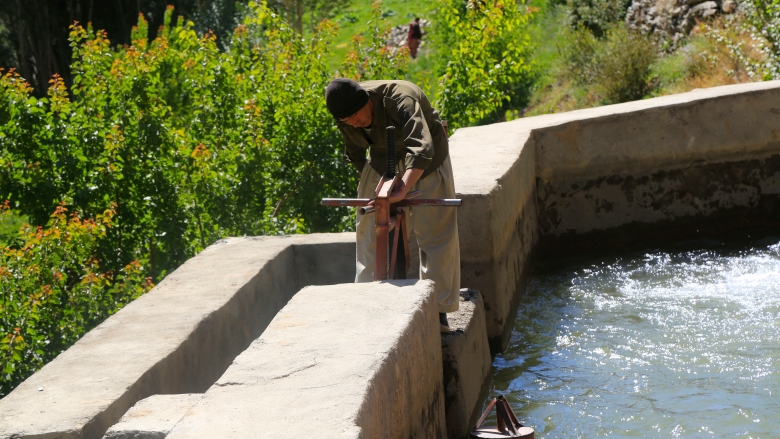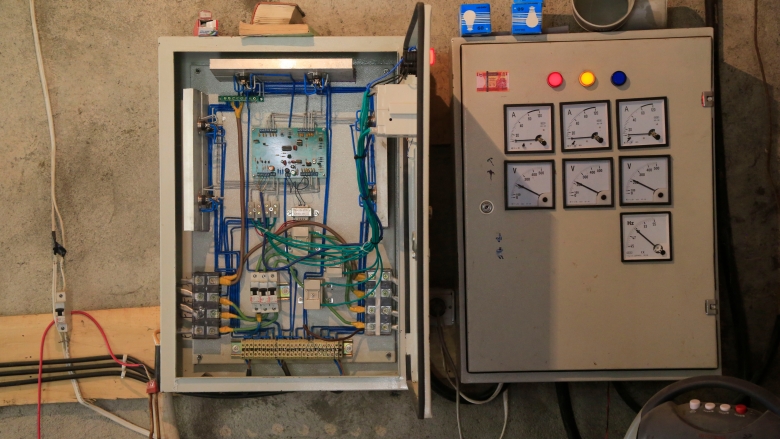SHIBAR DISTRICT, Bamyan Province – Yunos uses all his strength to open the big valve above the turbine. The water purls toward it and the belt around the turbine begins to spin and drive the poly dynamo, which gains momentum and turns on the ampere light.
Yunos has been in charge of the village micro-hydroelectric station for two years. He comes to the station on time every day to control the distribution of power. Village households receive electricity from 5 pm to 8 am, while schools are provided electricity during the whole school day.
The village is located northeast of Bamyan city, capital of Bamyan Province. It is among the thousands of villages the Government of Afghanistan is targeting to increase access to electricity in rural areas, where more than 77 percent of the population live. According to 2011-2012 estimates by the Ministry of Rural Rehabilitation and Development (MRRD), rural access to electricity covers only 9 percent of the total population. The percentage of population with access to electricity in Afghanistan is among the lowest in the world, in spite of gains in electricity coverage since 2002, with most going to urban areas.
Over the last 12 years, the National Solidarity Program (NSP), under MRRD, has invested over $200 million in projects to provide access to energy to over four million people in rural communities. More than 8,000 energy sector sub-projects, which have a total generation capacity of over 100 MW of power, have been financed under NSP. A recent randomized impact evaluation of NSP underlined that the energy related projects scored well on both impact and sustainability, exemplified by the recent sub-project in Sabzaab village.
Funding for building the micro-hydroelectric dam in Sabzaab village was provided through NSP, the government’s flagship program for rural development. NSP is currently in its third phase and aims to generate a strong sense of ownership and social stability while enhancing service delivery and security through empowerment and development activities that communities identify, plan, manage, and monitor on their own. It is supported by the International Development Association (IDA), the World Bank Group’s fund for the poorest countries, Afghanistan Reconstruction Trust Fund (ARTF) and Japanese Social Development Fund (JSDF).
In a sign of ownership, communities contribute in cash, kind, and voluntary labor toward the sub-projects implemented through NSP. Sabzaab residents, for example, contributed some 87,000 Afghanis ($1,350) of the total cost of 1.9 million Afghanis ($29,000) for construction of the micro-hydroelectric dam.
The construction of the micro-hydroelectric dam took two years and was completed in June 2014. The sub-project was implemented by the Sabzaab Community Development Council with technical cooperation from the Aga Khan Foundation (AKF), as Facilitating Partner.


